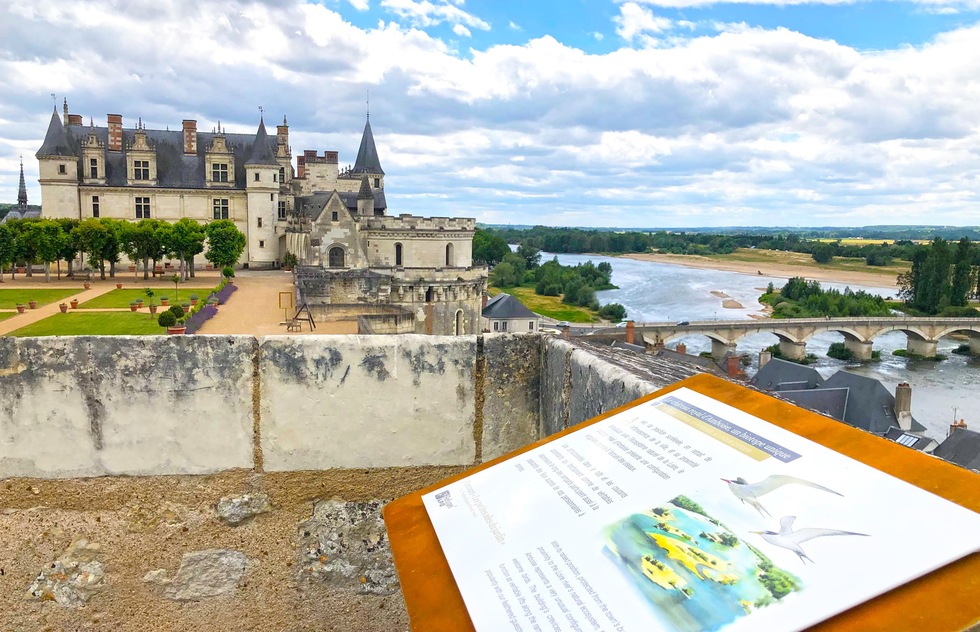On a rocky spur above the town, the medieval château was rebuilt in 1492 by Charles VIII, the first in France to reflect the Italian Renaissance.
Visitors enter on a ramp that opens onto a panoramic terrace fronting the river. At one time, buildings surrounded this terrace, and fêtes took place in the enclosed courtyard. The castle fell into decline during the Revolution, and today only about a quarter of the once-sprawling edifice remains. You first come to the Flamboyant Gothic Chapelle de St-Hubert, distinguished by its lacelike tracery, which holds the tomb of Leonardo da Vinci, who died in Amboise. Tapestries cover the walls of what’s left of the château’s grandly furnished rooms, which include the Logis du Roi (King’s Apartment). The vast Salle du Conseil, bookended by a Gothic and a Renaissance fireplace, was once the venue of the lavish fêtes. Exit via the Tour des Minimes (also known as the Tour des Cavaliers), noteworthy for its ramp that could accommodate horsemen and their mounts. The other notable tower is the Heurtault, which is broader than the Minimes, with thicker walls.






 About our rating system
About our rating system


